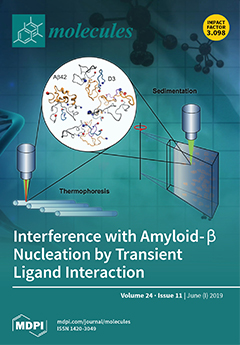Three new dimeric abietane-type diterpenoids, abieta-6,8,11,13-tetraen-12-yl 12-hydroxyabieta-8,11,13-trien-7α-yl peroxide (
1), abieta-6,8,11,13-tetraen-12-yl 12-hydroxyabieta-8,11,13-trien-7β-yl peroxide (
2), and 12-hydroxyabieta-8,11,13-trien-7β-yl 7-oxoabieta-5,8,11,13-tetraen-12-yl peroxide (
3), together with four known abietane-type diterpenoids (
4–
7) were isolated from the methanol extract of the
[...] Read more.
Three new dimeric abietane-type diterpenoids, abieta-6,8,11,13-tetraen-12-yl 12-hydroxyabieta-8,11,13-trien-7α-yl peroxide (
1), abieta-6,8,11,13-tetraen-12-yl 12-hydroxyabieta-8,11,13-trien-7β-yl peroxide (
2), and 12-hydroxyabieta-8,11,13-trien-7β-yl 7-oxoabieta-5,8,11,13-tetraen-12-yl peroxide (
3), together with four known abietane-type diterpenoids (
4–
7) were isolated from the methanol extract of the bark of
Cryptomeria japonica. Their structures were elucidated on the basis of spectroscopic analysis and comparison of NMR data with those of known analogues. At a concentration of 50 μM, compounds
1,
2, and
3 showed 26.2%, 23.6%, and 35.7% inhibition towards xanthine oxidase enzyme, respectively. In addition, compound
3 also showed 24.9% inhibition toward angiotensin-converting enzyme (ACE).
Full article






